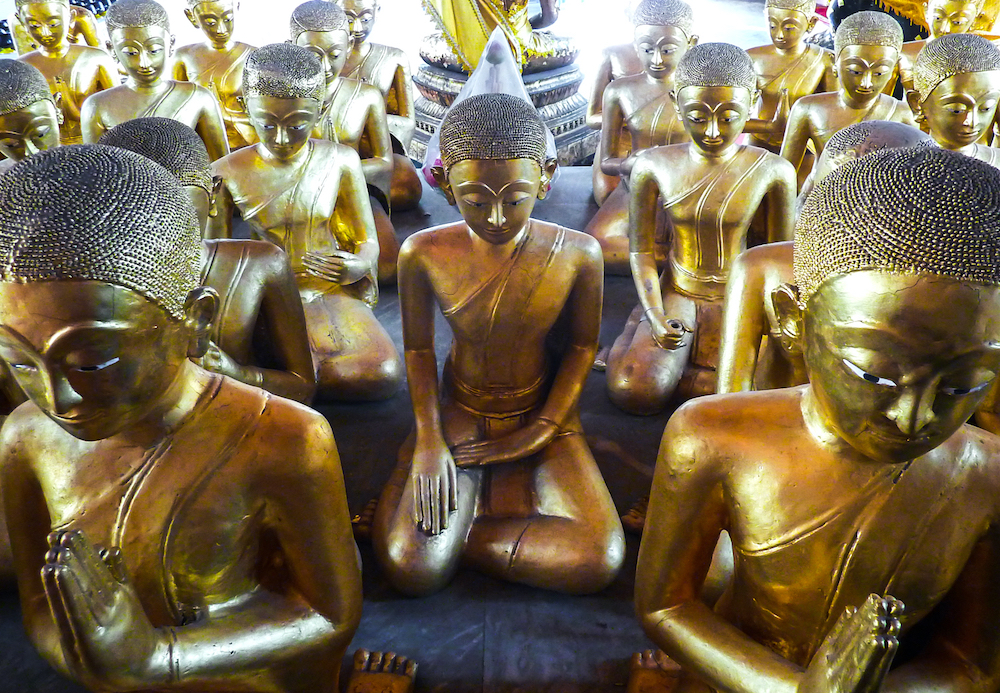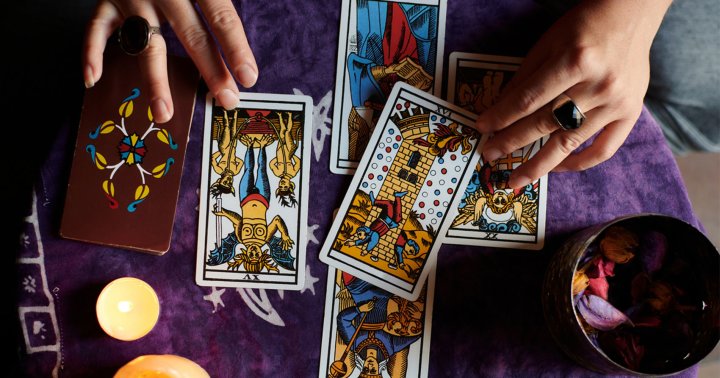The Rebel Nun and Her Extra-Large Begging Bowl
The Buddha’s response to one nun’s controversial actions illustrates a middle way between condemnation and neglect. The post The Rebel Nun and Her Extra-Large Begging Bowl appeared first on Tricycle: The Buddhist Review.

Arising as they do from an earlier oral tradition, Buddhist scriptures are brimming with stories. This is true not only of the sutras—that is, the foundational Buddhist scriptures such as the Heart Sutra, with which many will be familiar—but also of the Vinaya, which is the collective name for those scriptures that lay out in formal terms the practice of monastic discipline.
The rules that the Buddha sets forth in the Vinaya scriptures are typically illustrated with stories featuring certain nuns or monks who come to embody errant monastic behavior. Where the monks are concerned, a great number of rules were made based on the misbehavior of six (or twelve) monks in particular who became known as the Band of Six (or the Band of Twelve). On the nun’s side, there is one nun whose actions gave rise to a majority of the additional rules for nuns: Venerable Sthulananda.
Venerable Sthulananda’s actions range from the hilarious to the bewildering to the alarming, or even shocking. She was a rebel and a provocateur, even as she demonstrated strong devotion to the teachings and the order of nuns. In a sense, Venerable Sthulananda’s actions, while often problematic, constitute a tremendous contribution to the monastic discipline itself. For without her mistakes, many of the vows that form the basis of monastic practice would not exist.
What follows in this third installment in the series on women in the Vinaya is one of the most provocative stories about Venerable Sthulananda. On the one hand, it can be read as the scripture seems to suggest: an example of what Buddhist nuns ought not to do. But as we read, we can also notice our own responses, and even judgments, and consider how we relate to others.
During the time of Buddha Shakyamuni, there lived a woman married to a wealthy merchant who spared no expense satisfying her intense desire for fine things. When the merchant began traveling to other countries on business, she found there were other men who were just as generous and happy to lavish her with gifts. Her husband had been away for some time when she discovered she was pregnant. The timing of his trip meant that the child could not be his.
Her reaction was unequivocal. “I must get rid of this fetus in my womb,” she thought, “or else when my husband returns, he will destroy me.” Working to suppress her rising panic, she immediately took steps to end the pregnancy.
But when faced with the aborted fetus, she did not know what to do. She was brooding over how to dispose of it when a monastic approached the house for alms. It was Venerable Sthulananda, seeking alms on behalf of Buddha Shakyamuni’s order of nuns.
“There’s no one here to give you alms,” the woman said from behind the door. “Please go away.”
“Good woman, what is wrong?” said the nun. “Did someone die? Is no one home?”
“It’s not that someone has died, exactly,” the woman hedged, “so much as my child came out of me.” She explained her situation and said, “I don’t know how or where to get rid of it.”
“You are a woman of good reputation,” Venerable Sthulananda noted, before asking, “if I dispose of it for you, will you give me alms?”
“Yes, noble one, I will.”
Venerable Sthulananda smiled. “Will you also give alms to the next nun who comes?”
“Yes I will.”
“. . . annnnnnnnd to the keeper of the monastery storehouse?”
“Yes! I will, I will.”
“Very good, then,” said Venerable Sthulananda, briskly officious. “I’ll handle it.”
Already we can see in this story what a complex figure Venerable Sthulananda is. She demonstrates a commitment to helping provide for her community, and she shows concern for a woman who feels herself in danger from her husband. These are virtues. But as the story goes on, a question is raised about whether her subsequent actions constitute wrongdoing for a nun.
Venerable Sthulananda took the fetus, placed it inside her massive begging bowl and carried it over to an empty house. As she went to leave it there, the former residents entered the house, and when they saw what she was doing, they said to one another, “What is this bald-headed ascetic up to?”
Venerable Sthulananda responded with a sharp rebuke. “I’ll have you know that this belonged to a woman of high birth! I am just getting rid of it.” With that, she left the fetus there and departed.
Those who witnessed Venerable Sthulananda disposing of the fetus considered the action unbecoming of a nun and grew critical of the nuns of Buddha Shakyamuni’s order. The next time they saw a group of Buddhist nuns, they scolded them, shouting, “You nuns are an unruly bunch!” before reporting to the nuns what Sthulananda had done. The nuns told a group of monks what had taken place, and the monks in turn informed the Buddha.
Many of us may be surprised, even shocked, to hear about an early Buddhist nun helping to dispose of an aborted fetus. Some readers may take issue with a Buddhist nun having anything to do with an abortion; others will celebrate her practical, nonjudgmental assistance of a woman in crisis. Whatever our personal political orientation, it will likely color, or even define, our first reaction to the story.
Is a higher view possible? How did the Buddha himself react?
Many of the monastic rules arose in response to public outcry. Since the sangha depends for its subsistence, after all, on the layfolk of the surrounding community, amicable community relations are a must. But interestingly, while the Buddha took swift action to safeguard the monastic community from disgrace, condemning her actions, he stopped short of condemning Venerable Sthulananda herself. Instead, he created a rule removing the condition that made her action possible in the first place: he forbade the nuns to use extra-large begging bowls.
“What took place was only possible because a nun was making use of an extra-large begging bowl,” the Buddha said. “That being the case, nuns should not make use of overly large begging bowls.” Turning to the monks, he said, “Monks, Sthulananda has done what a nun should not. Nuns should not take such actions, nor should they make use of large begging bowls.”
***
The first two women we met in this series were ripe for idealization. There was Mahaprajapati Gautami, first head of the nun’s order and paragon of virtue; and Krsha Gautami, whose tale of redemption brought her from unfathomable trauma to high realization in the course of a single lifetime. Venerable Sthulananda is different.
In our own lives, we are likely to encounter sentient beings who harbor shocking secrets or behave in ways others may not approve of; who take action, but do so narcissistically; or who do a wrong thing for a very good reason. Put another way, we are more likely to encounter the “Venerable Sthulanandas” of the world than the “Mahaprajapati Gautamis.”
Works of literature, such as those we encounter in the scriptural canon, provide a special opportunity to learn to appreciate and love a person like Venerable Sthulananda for their boldness, independence, and enormous practicality, even if or as we label their behavior problematic for the communities to which they belong.
The Buddha’s response shows us that boundary-setting doesn’t require the categorical rejection of a person or their permanent expulsion from the community.
Who doesn’t have a “Venerable Sthulananda” in their life—a person with whom we must set boundaries around certain behaviors? The Buddha offers an approach that is less concerned with censure and more focused on removing the conditions that allow for the arising of conflict. The Buddha’s response shows us that boundary-setting doesn’t require the categorical rejection of a person or their permanent expulsion from the community. Simply put, from where the Buddha sits, just because a behavior may be problematic, does not necessarily mean that the person is.
This advice, it turns out, is not easy to take to heart. The temptation is to act as others did in the story, in which they saw Venerable Sthulananda amid an “unseemly” act and swiftly condemned her. Not only that, but they leveraged her actions into grounds for condemnation of the entire community to which she belonged. Had it been available to them, one imagines the disapproving householders calling Venerable Sthulananda out on Twitter, doxxing or threatening her life, proposing a ban on the nun’s order—the modern-day list goes on and on.
The present political moment—not only in the United States but also in many places around the world—seems to encourage us to see things in terms of stark contrasts, to imagine that those who hold views contrary to our own must be quite unlike us. It’s true that we may need to create boundaries, take action to stop wrongdoing, or detach from a problematic relationship. Still, a personal sense of reconciliation may be possible even as conflict persists. Here, the reconciliation is an inner one. It is an awareness of both parties’ buddhanature. As Zen master Thich Nhat Hanh reminded us, “Understanding,” or even the hope of it, “is the essence of love.”

 Troov
Troov 
































